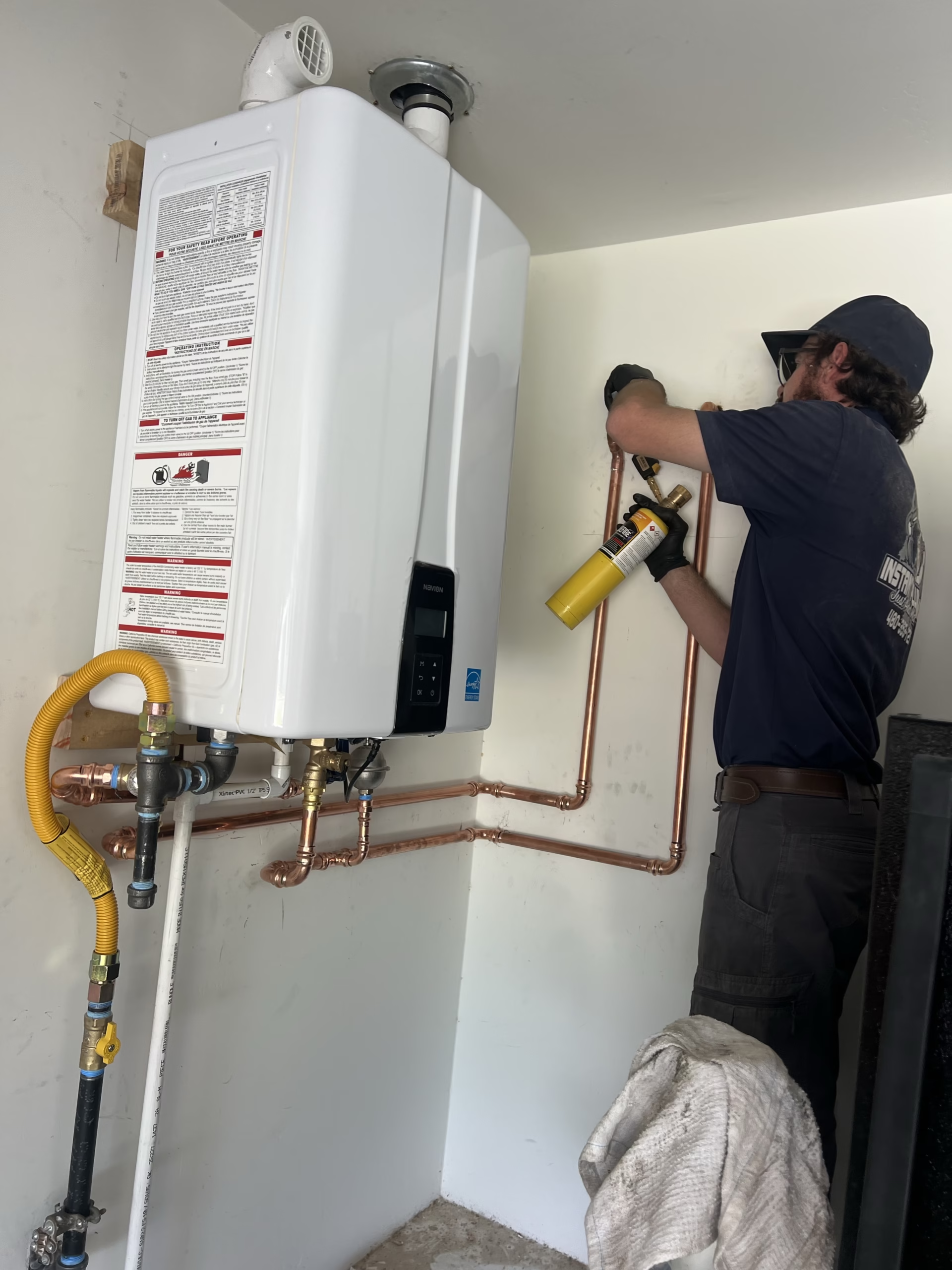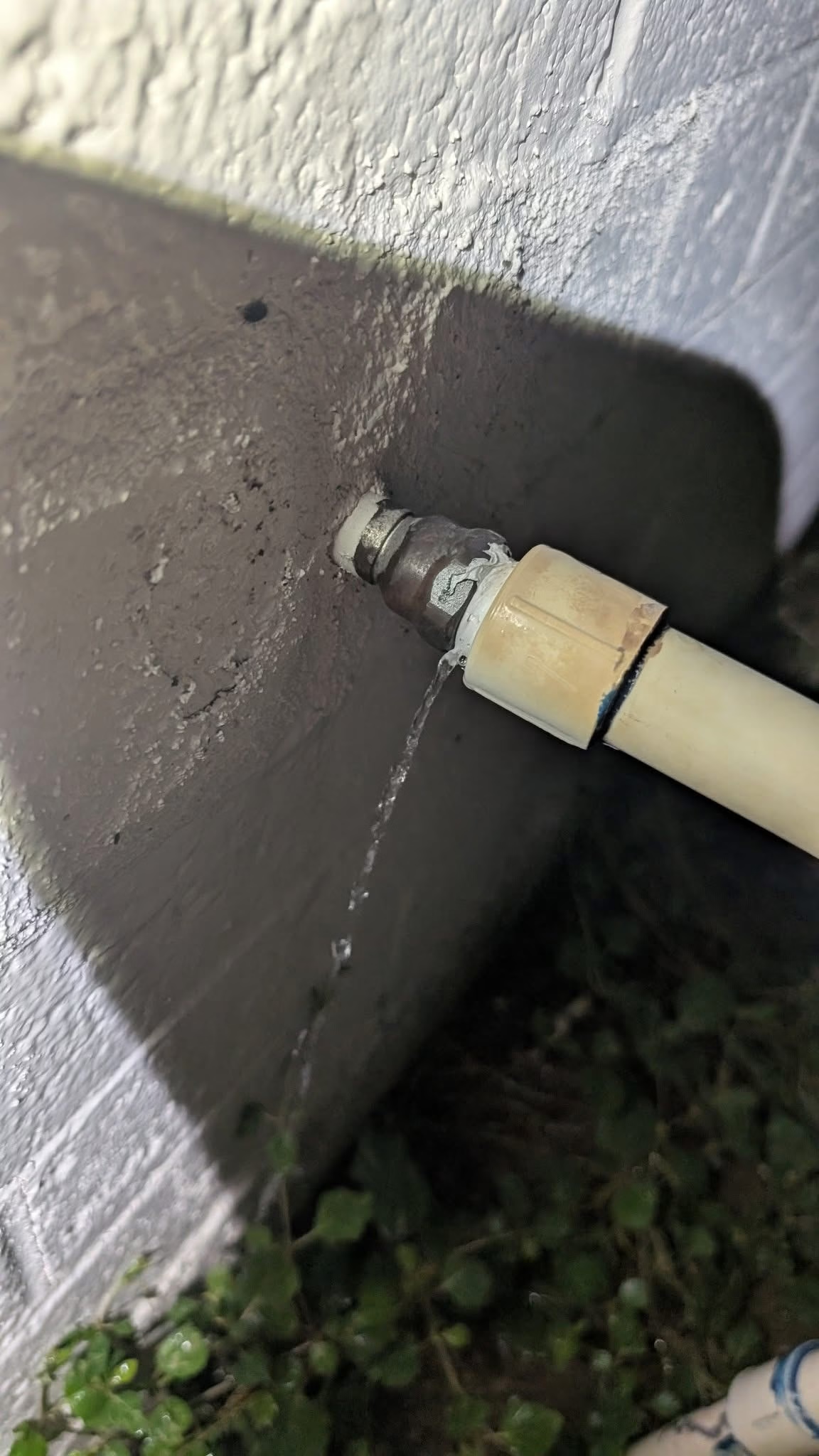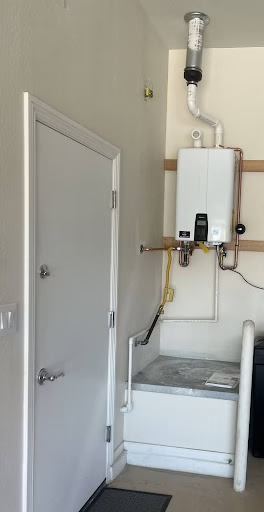You’ve probably felt it before. You turn on the shower, and the water comes out with such force it feels like a fire hose. Or maybe the toilet flushes with a bang, and you can hear the pipes rattling in the walls. These little annoyances aren’t just quirks of an older home—they’re often red flags pointing to a single, silent issue: high water pressure.
It’s a problem we see all the time here at Instant Plumbing, and it’s a concern that homeowners in Glendale, Phoenix, Scottsdale, and all across the Valley of the Sun often have without even knowing it. You’re worried about leaks, why your water bill is so high, or why your brand-new dishwasher is already acting up. You’re afraid of a major pipe bursting. You’re a homeowner trying to take care of your biggest investment, but this problem feels invisible. We get it. It’s frustrating to deal with a problem you can’t see or hear until it’s too late.
That’s where a simple, yet powerful, device called a Pressure Reducing Valve (PRV) comes in. Think of it as the ultimate bouncer for your home’s plumbing system—it lets the right amount of water pressure in and keeps the destructive, high-pressure stuff out. But what exactly is a PRV, and why is it so important for your home? We’re here to pull back the curtain and explain everything you need to know.
The Hidden Dangers of High Water Pressure in Your Phoenix Home
In the Valley of the Sun, our plumbing systems face a unique set of challenges. High temperatures, hard water, and sometimes, incredibly high pressure from the city’s main water line can all work together to create some serious plumbing headaches.
Understanding Your Home’s Ideal Water Pressure Range
For a residential home, there’s a sweet spot for water pressure. It’s usually between 40 and 60 pounds per square inch (psi). This is enough pressure to get a good shower and run all your appliances, but not so much that it causes damage. When your pressure is consistently above 75 psi, you’re living in what we call the “danger zone.” Anything over 75 psi is like running a marathon in dress shoes—your plumbing just isn’t built to handle that kind of daily stress.
Fun little personal story. We were enjoying a nice evening out in the backyard with our littles, when we heard a very weird noise. We could hear water running from somewhere, but the sprinklers were not on, the hose was not on. Where was it coming from?!? So, we went on the hunt for the noise. When we finally found it, our mattress, carpet and the floor between was soaked. The supply line on our toilet had blown off. The cause for the blown off supply line? High water pressure! Needless to say, we slept on the couch for the next 3 nights, while the mattress and flooring dried out. NOT FUN.
The Silent Killer: Why High Pressure Damages Appliances and Fixtures
Imagine the hoses and seals on your washing machine, dishwasher or refrigerator’s ice maker. They’re designed to handle a normal amount of force, but when that pressure is too high, it’s like constantly squeezing a balloon just before it pops. Over time, those seals and hoses wear down, crack and fail long before their time. This isn’t a theory—it’s a plumbing reality we see every day. High water pressure can also cause toilet flappers to fail, faucets to leak and even small pinhole leaks to form in your copper pipes.
The Costly Reality: How High Water Pressure Increases Your Water Bill
Think of your home’s water system as a garden hose. If you turn the spigot on full blast, more water sprays out faster, even if you’re just trying to fill a small bucket. The same thing happens in your home. With high pressure, more water rushes through your showerhead, faucet and fill valves, leading to increased water consumption. This excess water isn’t doing anything productive; it’s just draining down the pipes, and you’re paying for it. Over a year, this small waste adds up to a surprisingly large amount on your water bill.
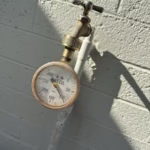
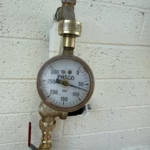
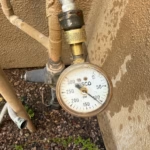
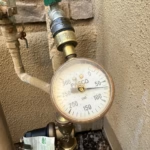
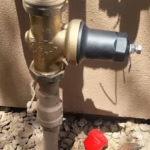
PRV Explained: What is a Pressure Reducing Valve or Water Pressure Regulation Valve?
A Pressure Reducing Valve, or PRV, is a simple mechanical device that does exactly what its name says: it reduces and regulates the water pressure coming into your home. It’s installed on your main water line, usually where the main line enters your house or in some areas near your water meter. Its job is to take the high, unregulated pressure from the city and bring it down to a safe, steady level for your home’s plumbing.
How a PRV Works to Protect Your Plumbing
The inside of a PRV is pretty clever. It has a spring and a diaphragm that work together to sense the water pressure. When the pressure coming in is too high, the diaphragm presses against the spring, which then closes a valve just enough to slow the water flow and reduce the pressure on the other side. This all happens automatically and instantly, providing a consistent, safe pressure level for every faucet, toilet and appliance in your home.
What a PRV Looks Like and Where It’s Installed
A PRV is typically a bell-shaped brass valve. It’s usually installed in a single, accessible spot on the main water line right where it enters your home. While you may see a few older homes with the valve in a box in the ground, it’s very uncommon for our area, but we have seen a few. Figuring out if you have a PRV or where it is, is the first step to understanding your home’s water pressure.
How to Test Your Home’s Water Pressure to Know if You Need a PRV
The easiest way to check your water pressure is with a simple tool called a pressure gauge. These are inexpensive and screw onto any outdoor hose bib. To get the most accurate reading, you should do the following:
- Make sure all faucets, appliances and water-using fixtures in your home are turned off.
- Screw the pressure gauge onto a hose bib.
- Slowly turn on the hose bib.
- Read the pressure on the gauge.
If the reading is consistently over 75 psi, you likely need a PRV, or your existing one may need to be replaced.
The Benefits of a Properly Functioning PRV
When a PRV is doing its job, you might not even notice it. It’s one of those things that just works in the background, quietly protecting your home. But the benefits are anything but silent.
Extended Lifespan for Appliances, Fixtures and Pipes
This is the biggest benefit. By maintaining a safe water pressure level, a PRV prevents the kind of wear and tear that leads to early failure. This means your water heater, dishwasher, washing machine and even your pipes will last years longer. A PRV can save you thousands of dollars in premature replacement costs.
Lowering Your Water Usage and Utility Bills
With a PRV, you’ll notice a difference in your water bill. Because you’re using a controlled flow of water, you’re not wasting gallons of water every time you wash your hands or take a shower. It’s a small change that can lead to significant savings over time.
A More Consistent and Comfortable Water Flow
Have you ever been taking a shower when someone flushes the toilet and you get blasted with a sudden change in temperature? This often happens with high, unregulated pressure. A PRV creates a steady, even flow of water throughout your home, eliminating those shocking fluctuations and making your daily routines more comfortable.
Life Without a PRV: Signs of High Water Pressure Problems
If your home does not have a PRV or it’s not working correctly, your plumbing system will let you know. Here are some of the most common warning signs we encounter:
Noisy Pipes or “Banging” Sounds
When you turn a faucet off quickly, do you hear a loud banging sound in the walls? This is known as “water hammer,” and it’s a direct result of water pressure being too high. When the flow stops abruptly, the pressurized water slams into the closed valve, creating that jarring noise. It’s a sign of a PRV problem and it’s not something you should ignore.
Leaky Faucets, Toilets and Hose Bibs
Those pesky drips from a faucet or a running toilet are often caused by excessive water pressure. The high pressure puts strain on the washers and seals inside the fixture, causing them to wear out much faster than they should. If you’re constantly replacing parts, it’s a good sign that your water pressure is the real culprit.
Premature Water Heater Failure
A water heater under constant high pressure is like a shaken soda can. The excess pressure inside the tank can cause the valves to fail, leading to leaks and, in severe cases, even tank ruptures. The average water heater should last for 6-10 years, but a home with high water pressure might only get half that time out of it.
Reduced Efficiency and Lifespan of Water-Using Appliances
When your dishwasher or washing machine fills, the water enters through a valve that’s not designed for high pressure. Over time, this valve can fail, causing the appliance to fill improperly, leak, or not function at all. High pressure is a common reason why new appliances don’t last as long as they should.
PRV Installation and Maintenance: What You Need to Know
A PRV is a crucial part of your home’s plumbing system, but it’s not a set-it-and-forget-it item. They have a lifespan and need to be properly installed and maintained.
Professional PRV Installation vs. DIY: A Cost and Safety Comparison
While some homeowners might be tempted to tackle a PRV installation themselves, we strongly recommend leaving this job to a licensed plumber. Installing a PRV incorrectly can lead to improper pressure regulation, which defeats the purpose of the device. More importantly, it can also lead to leaks and damage. A professional plumber will ensure the job is done right, the pressure is set to a safe level, and that the work complies with local plumbing codes.
How Often Should a PRV Be Replaced?
A PRV is a mechanical device, and like any other mechanical device, it wears out over time. On average, a PRV in the Phoenix area needs to be replaced every 10-12 years. However, with our hard water and high temperatures, it’s not uncommon for them to need to be rebuilt every 3-5 years. A routine plumbing inspection can easily determine if your PRV is still working correctly.
What to Expect During a PRV Replacement
When we replace a PRV, the process is straightforward and typically takes a few hours. We will shut off the main water supply, remove the old valve, and install the new one. We’ll then test the pressure to make sure it’s set to a safe level and check for any leaks. We will also perform a quick visual check of the surrounding plumbing to make sure everything is in good shape.
Don’t wait for a burst pipe or a ruined mattress to learn the hard way (like we did). Contact Instant Plumbing today to schedule your professional water pressure inspection and ensure your home’s plumbing is safe and sound.
Frequently Asked Questions
Q: How much does a PRV installation cost?
A: The cost of a PRV installation can vary depending on the location, size and complexity of the job. Instant Plumbing offers free estimates to give you an exact cost on a PRV Installation, but remember that the cost of a new PRV is a small investment compared to the potential thousands of dollars in damage from high water pressure.
Q: Why does my water pressure fluctuate even with a PRV?
A: If your water pressure is still jumping up and down with a PRV, it’s a strong sign that the valve itself is failing. Over time and with our hard water in the Valley, the internal parts of the PRV can wear out, causing it to lose its ability to regulate pressure properly.
Q: Can I adjust my PRV myself?
A: While PRVs are adjustable, we do not recommend homeowners try to adjust them on their own. Incorrectly adjusting the PRV can lead to dangerously low or high water pressure, which can damage your plumbing and appliances. It’s always best to have a professional plumber handle any adjustments.
Q: Is a PRV a water hammer arrestor? What’s the difference?
A: No, they are two different things. A PRV regulates the overall pressure of water coming into your home. A water hammer arrestor is a small device installed at a specific point (like near a washing machine) to absorb the shock of a sudden water flow stoppage, which prevents that banging sound. A working PRV can often prevent water hammer from happening in the first place by keeping the pressure at a safe level.
Q: Where can I find the best plumbers in Phoenix for a PRV installation?
A: If you need a PRV installed or replaced in the Phoenix area, it’s crucial to hire a licensed and experienced plumber who understands the unique plumbing challenges of the Valley. The team at Instant Plumbing has been serving Glendale, Phoenix, and the surrounding communities since 2001, and we’re here to help you protect your home.



